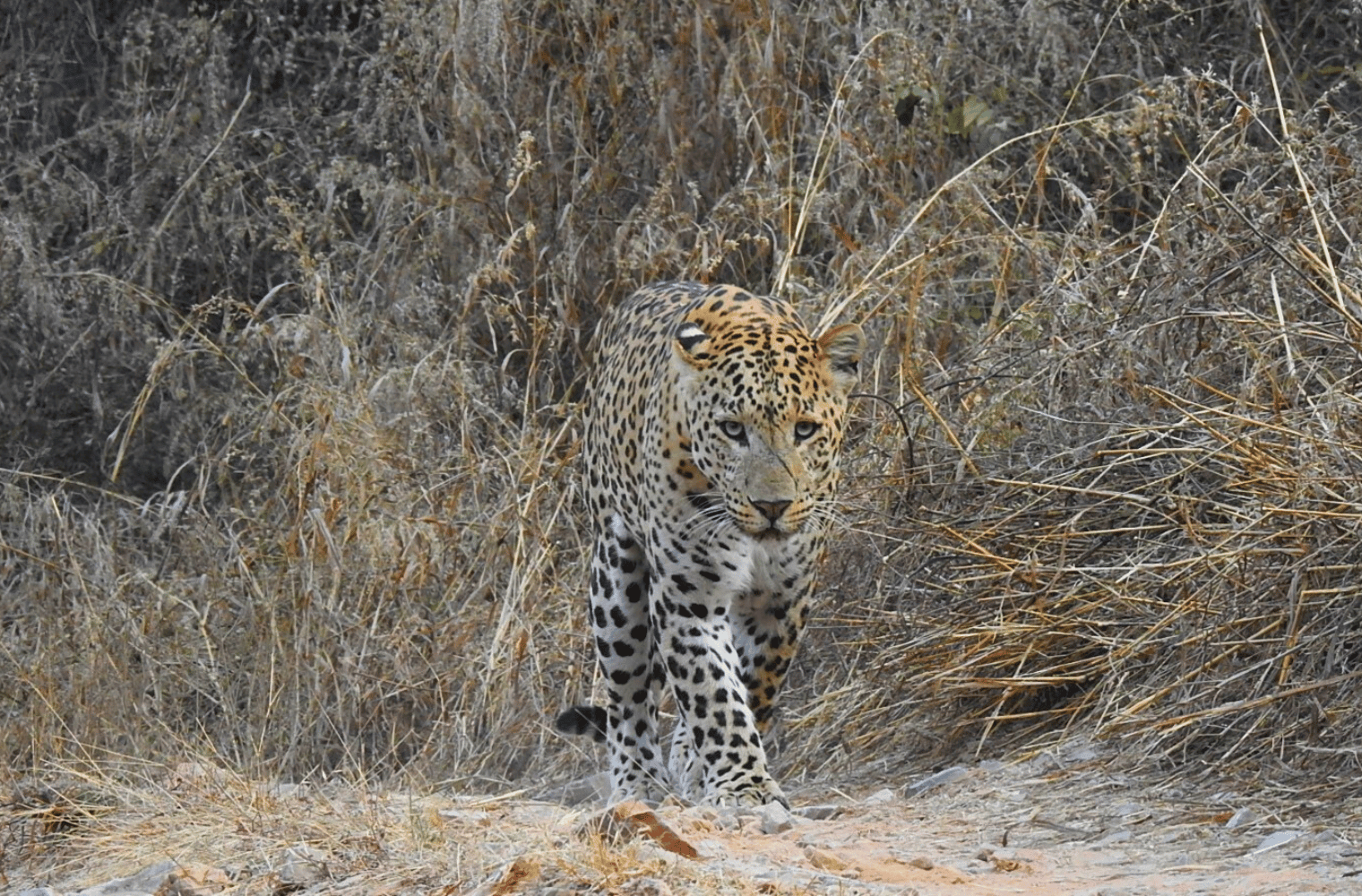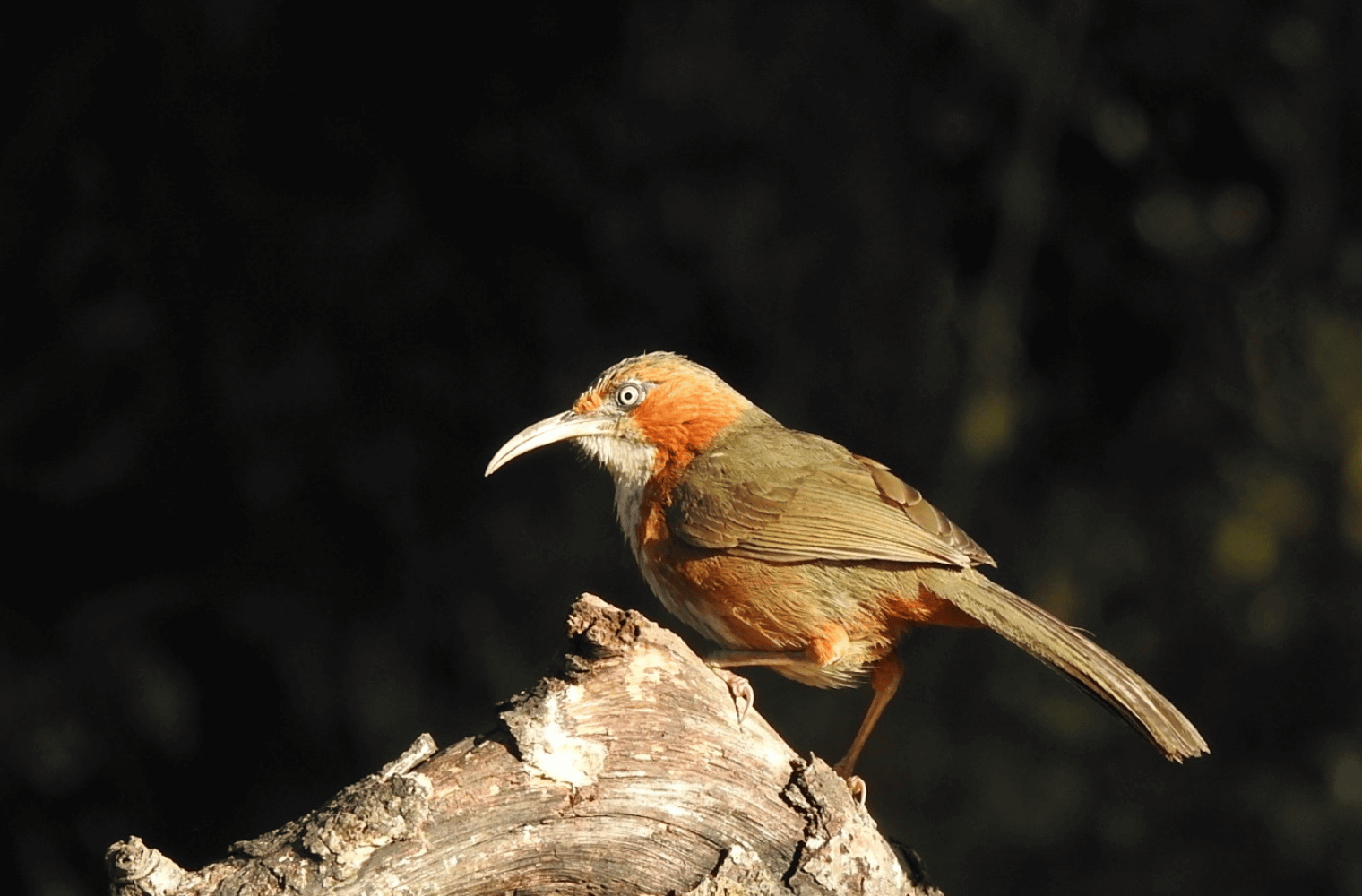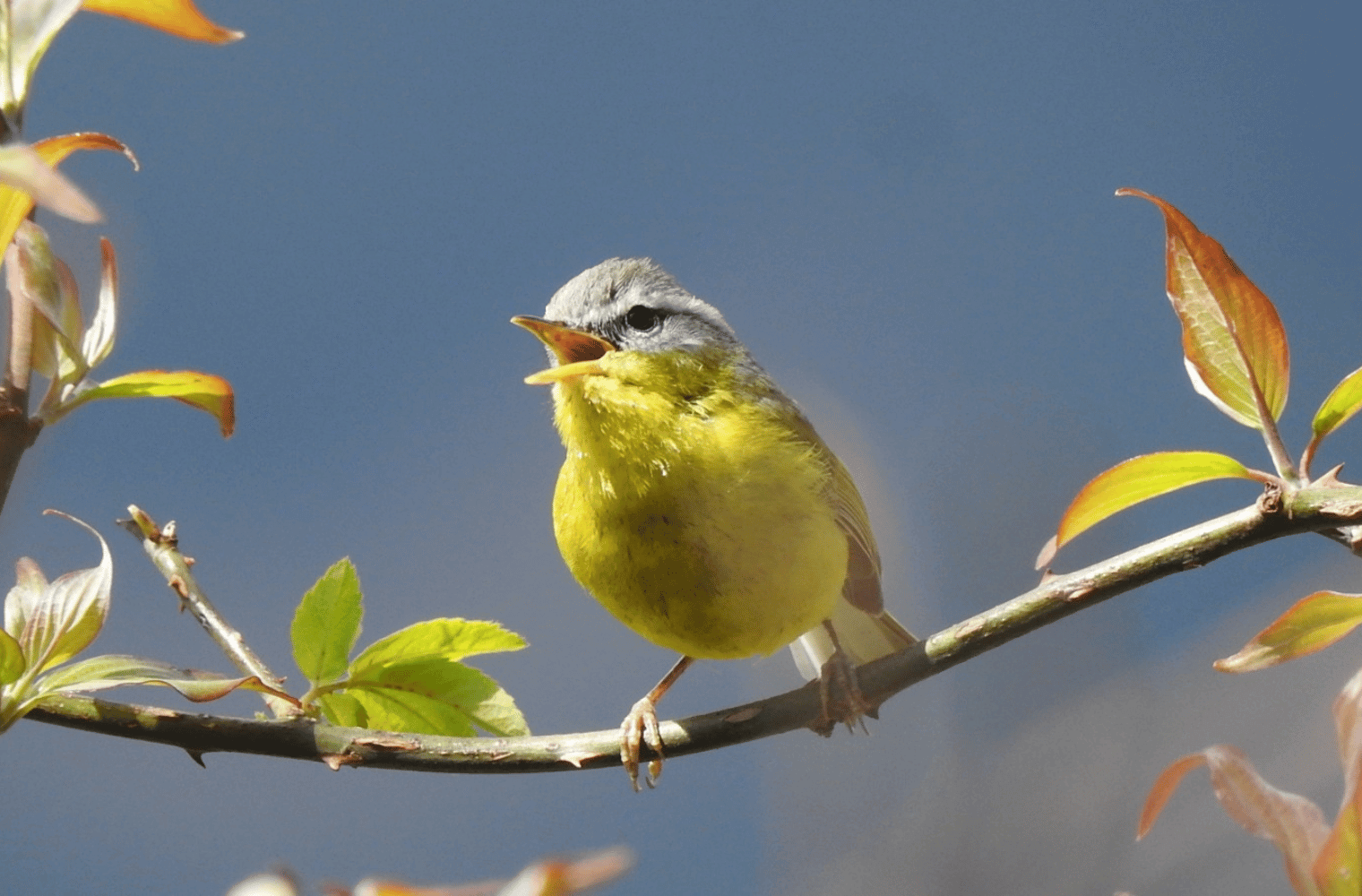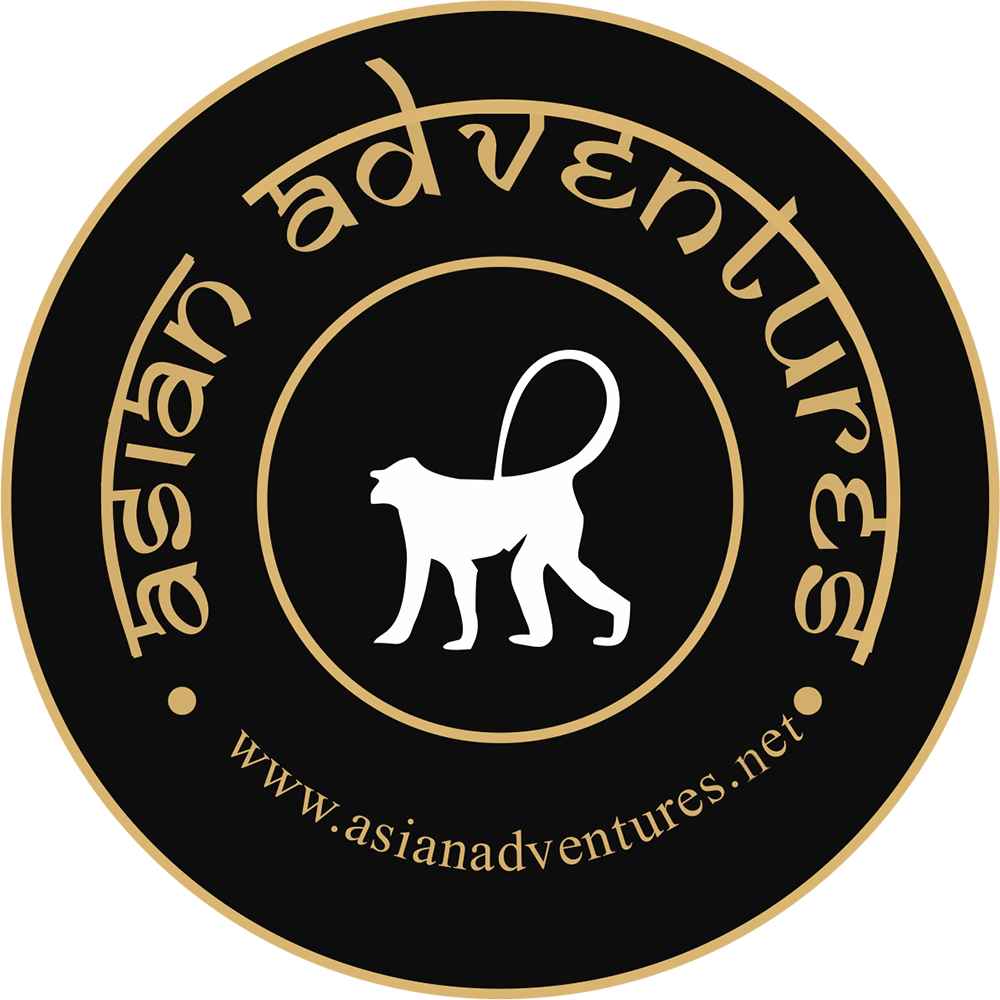Overview
This tour takes you to the best birding sites of North India (such as Sultanpur Bird Sanctuary, Keoladeo National Park and National Chambal Sanctuary, and Himalayan Foothills) and the best Tiger Park of Rajasthan (Ranthambore National Park) and Uttarakhand (Corbett National Park) along with the must-do visit to the Iconic Taj Mahal.

Meals: On own
Accommodation: Hotel Shanti Palace
Arrive Delhi. You will be met and transferred to the hotel.
Overnight stay.

Meals: Breakfast and Lunch in Delhi, Dinner in Ranthambhore
Accommodation: Ranthambhore Heritage Haveli
Leave for Sultanpur at 0530 hrs (an hour's drive) for 3-4 hours of productive birding. Return to the hotel at 1100 hrs. Check out at 1145 hrs and transfer to Delhi Railway station for a day train to Ranthambore at 1330 hrs. Arrive at Ranthambore at 1925 hrs. You will be met and transferred to the Resort.
Overnight stay
Key species: Indian Peafowl, Indian Courser, Red Collared Dove, White-throated Kingfisher, Sind Sparrow, Black-breasted Weaver, Bengal Bush Lark

Meals: Breakfast, Lunch, and Dinner
Accommodation: Ranthambhore Heritage Haveli
Morning and afternoon safaris in the national park for tiger tracking, wildlife viewing, and birdwatching.
Overnight stay.
Key species: Tiger, Leopard, Sloth Bear, Indian Peafowl, Rufous Treepie, Crested Bunting, White-browed Fantail, Spotted Owlet, Indian Scops Owl

Meals: Breakfast and Lunch in Ranthambhore, Dinner in Bharatpur
Accommodation: Hotel Kadamb Kunj
Enjoy a final morning safari in Ranthambore National Park. After lunch, drive to Bharatpur stopping en route for birding. Arrive in Bharatpur in the early evening. Birding outside the fields if time permits. Overnight stay.
Key species: Indian Peafowl, Grey Francolin, Indian Courser, Yellow-wattled Lapwing, Great Grey Shrike, Ashy-crowned Sparrow-Lark, Blue Rock Thrush, Baya Weaver

Meals: Breakfast, Lunch, and Dinner in Bharatpur
Accommodation: Hotel Kadamb Kunj
Birding in Keoladeo National Park on foot and cycle rickshaws with a birding guide.
Overnight stay.
Key species: Sarus Crane, Dusky Eagle-Owl, Knob-billed Duck, Lesser Whistling Duck, Cotton Pygmy Goose, Great White Pelican, Bar-headed Goose

Meals: Breakfast and Packed Lunch from Bharatpur, Dinner in Agra
Accommodation: Jaypee Palace
Enjoy a morning birding session outside the park. Check out at 1030 hrs and drive to Chambal (90 km / 2 hrs.) Arrive in Chambal and get ready to enjoy the afternoon safari at Dholpur. Later drive to Agra. Arrive Agra in the evening. Check-in to you hotel.
Overnight stay.
Key species: Indian Peafowl, Grey Francolin, Indian Courser, Yellow-wattled Lapwing, Spotted Owlet, Long-tailed Shrike, Great Grey Shrike, Ashy-crowned Sparrow-Lark

Meals: Breakfast and Lunch in Agra, Dinner in Noida
Accommodation: Radisson Blu Kaushambi
Morning guided tour of the Taj Mahal (closed on Fridays). Apart from the Taj Mahal, Agra is also home to the massive Red Fort, which has been the seat of Mughal rulers for several years. Shikandra, the red sandstone mausoleum of Emperor Akbar, is also a popular monument.
Later, we will drive to Noida. Arrive in Noida in the late evening.
Overnight stay.

Meals: Breakfast in Noida, Late Lunch, and Dinner
Accommodation: Wildlife Resort
In the morning, drive from Noida to Corbett National Park (220 km / 7 hr.). Arrive at the resort for late lunch. Afternoon safari in Corbett National Park.
Overnight stay.
PC: Tiger - Kintoo Dhawan

Meals: Breakfast, Lunch, and Dinner
Accommodation: Wildlife Resort
Morning and afternoon jeep safaris for birding and wildlife viewing.
Overnight stay
Key species: Tiger, Asiatic Elephant, Indian Muntjac, Sambar, Great Hornbill, Oriental Pied Hornbill, Lineated Barbet, Great Slaty Woodpecker, Black Francolin, Kalij Pheasant.
PC: Tiger - Kintoo Dhawan

Meals: Breakfast in Corbett, Lunch and Dinner in Pangot
Accommodation: Jungle Lore Birding Lodge
Morning bird walks at Kumeria. Return for lunch. One can look for Black Bulbul, Brown Fish Owl, Little and Spotted Forktail, Yellow-bellied and White-browed Fantail, White-crested Laughingthrush, Black-winged Cuckooshrike, Striated Heron, Wallcreeper, Red-breasted Parakeet, Long-tailed Minivet, Brown Dipper, Ashy-crowned Sparrow Lark, etc. Afternoon drives to Corbett Falls stopping en route at Dabka Causeway to look for Ashy Crowned Sparrow-Lark. After birding at Corbett Falls continue to Pangot. Arrive for lunch. Afternoon leisurely birding in and around the lodge. One can see Crested Woodpeckers such as Greater Yellownape, Scaly-breasted, Speckled Piculet, etc., large flocks of Slaty-headed Parakeets, numerous Spotted and Oriental Turtle Doves, Grey Bush Chat, and Russet Sparrow. Large-billed Crow, Grey Treepie, Black-headed Jay, Maroon Oriole, Large Cuckooshrike, Black-throated and Yellow-browed, and Smaller numbers of Himalayan Black-lored Tit and Green-backed Tit. White-tailed Nuthatches, and Bar-tailed Treecreeper.
Overnight stay.
PC: Nepal Wren Babbler - Kintoo Dhawan

Full-day birding at Cheena Peak, Kilbury, and Timla Pani.
Overnight stay.
Key species: Kalij Pheasant, Cheer Pheasant, Koklass Pheasant, Hill Partridge, Red-billed Blue Magpie, Striated Laughingthrush, Wedge-tailed Green Pigeon, Slaty-headed Parakeet.
PC: Cheer Pheasant - Kintoo Dhawan

Meals: Breakfast, Lunch, and Dinner
Accommodation: Jungle Lore Birding Lodge
Another full day of birding at Cheena Peak, Kilbury, and Timla Pani. Overnight stay.
Key species: Rufous-throated Partridge, Mountain Hawk-Eagle, Black-throated Bushtit, Black-throated Sunbird, Green-backed Tit, Grey-hooded Warbler, Rufous-bellied Niltava, Small Niltava.
PC: Koklass Pheasant - Kintoo Dhawan

Meals: Breakfast in Pangot, Packed Lunch from Pangot, and Dinner in Sat Tal
Accommodation: Lavanya Resort
Spend the morning birding in Pangot. Check out at 0900 hrs and drive to Sat Tal (39 km / 2 hr.), stopping en route at various birding locations. Arrive in Sat Tal and go straight up to the Studio area for birding. In the evening, transfer to the hotel.
Overnight stay.
The entire drive is through the forested area of Cheena Peak Range via Snow View Point and Kilbury. One can see a variety of Himalayan species along the way such as Bearded Vulture, Himalayan Vulture, Blue-winged Minla, Spotted and Slaty-backed Forktail, Rufous-bellied Woodpecker, Rufous-bellied Niltava, Kalij Pheasant, variety of Thrushes etc. More than 200 species have been recorded at Pangot and surrounding areas. The numerous Perennial and seasonal Creeks are home to an amazing variety of flora and fauna including the Leopard, Yellow-throated Marten, Himalayan Palm Civet, Ghoral, Barking Deer, Sambar, Red Fox etc.

Meals: Breakfast, Lunch in Sat Tal, and Dinner in Delhi
Accommodation: Hotel Shanti Palace
Half day birding in Sat Tal with your guide. The habitat offers species such as White-crested Laughingthrush, Rufous-gorged Flycatcher, Red-billed Leothrix, Siberian Rubythroat, Rock Bunting, etc. This scattered and deliberately undeveloped area is one of the most pleasant destinations. Look for Rufous-chinned Laughingthrush, Rufous-breasted Accentor, Greater Yellownape, Speckled Piculet, Golden Bush Robin, etc.
Drive back to Delhi (371 km / 8 hr.). Arrive in Delhi.
Overnight stay.

Meals: Breakfast
Accommodation: None
After breakfast, checkout and drive to Delhi airport to connect the flight back home.
Highlights
- A large list of bird species of the Himalayan region
- Himalayan views
- Farm-fresh Indian meals
- Quaint lodges and camps
- Easy birding
- A large variety of other mammals
- Great birding in scrubland, wetlands, and Riverine Eco-system
- Option of visiting the iconic Taj Mahal
- Glimpses of the beautiful landscape, architecture and lifestyle of North India
Included
- Accommodation for 02 nights in Delhi Half day birding in Sultanpur with park entrance fee
- Train tickets from Delhi to Ranthambhore Accommodation for 02 nights in Ranthambhore
- 03 safaris in Ranthambhore with park entrance fee Accommodation for 02 nights in Bharatpur
- Birding in Bharatpur on foot and cycle rickshaw (02 persons per rickshaw basis) Bharatpur Park entrance fee (once a day only)
- 01 boat cruise in Chambal (Dhaulpur) Accommodation for 01 night in Agra
- Guided Tour of Taj Mahal and Red Fort with monument entry fee Accommodation for 01 night in Noida
- Accommodation for 02 nights in Corbett 03 safaris in Corbett National Park with entrance fee
- Accommodation for 03 nights in Pangot Accommodation for 01 night in Sat Tal
- All meals from day 02 Breakfast till last day lunch Dedicated Birding Guide for the entire trip
- All airport, railway station and surface transfers by a private air-conditioned car / coach All Taxes
Video
Location
Stories
FAQ's
- What is the best time of year to visit these birding and wildlife destinations?
-
The best time to visit is from November to March. During these months, the weather is pleasant, and migratory birds are at their peak. The cooler temperatures make wildlife more active, and this period coincides with the arrival of migratory species from Central Asia, Europe, and Siberia, particularly in birding hotspots like Bharatpur and Sultanpur Lake.
- What kind of clothing should I pack for the trip?
-
Pack lightweight, breathable clothing in neutral colors to avoid disturbing wildlife. Include a warm jacket for cold mornings and evenings in the Himalayas, a rain jacket for unexpected showers, and sturdy walking shoes or hiking boots. Bring a hat, sunglasses, and sunscreen for sun protection, as well as insect repellent to ward off mosquitoes. It’s also advisable to pack a set of binoculars and a reusable water bottle.
- What photography equipment is recommended for this trip?
-
A DSLR or mirrorless camera with telephoto lenses (200-500mm) for bird and wildlife photography is recommended. A wide-angle lens is useful for landscapes, especially in places like the Himalayan foothills and the wetlands of Bharatpur. A sturdy tripod will help stabilize your camera for sharp images, particularly in low-light conditions. Extra batteries, memory cards, and a lens cleaning kit are essential for ensuring you don’t miss any shots.
- Do I need any special permits to visit these wildlife areas?
-
Yes, certain areas, especially national parks like Ranthambore and Corbett, require permits for entry and safaris. These permits are often limited in number to control the environmental impact. We will arrange these permits for you in advance, but it’s essential to carry valid identification documents such as a passport or driver's licence for verification purposes.
- Are there guided tours available at these destinations?
-
Yes, our guided tours are led by experienced naturalists and local experts are available at all destinations. These guides are knowledgeable about the local flora and fauna and can greatly enhance your bird-watching and wildlife-viewing experience by helping you spot elusive species and providing valuable insights into their behaviors and habitats.
- What kind of accommodation can I expect during the trip?
-
Accommodations range from comfortable hotels in cities to rustic lodges and guesthouses near wildlife sanctuaries. These lodgings offer basic amenities such as clean rooms, hot water, and dining facilities. They are selected for their proximity to nature and provide a balance between comfort and immersion in the local environment.
- How physically demanding is this itinerary?
-
The itinerary involves moderate physical activity, including walking on trails, climbing small hills, and occasional long drives. Participants should be in good health and prepared for varying weather conditions and terrain. Activities are designed to be manageable for most fitness levels, but it’s advisable to consult with your doctor if you have any pre-existing health conditions.
- What species of birds and mammals can I expect to see?
-
In Sultanpur Lake and other Delhi sites, expect to see Sarus Crane, Greater Flamingo, Northern Pintail, and various herons and kingfishers. At Ranthambhore, you may spot the Bengal Tiger, Indian Leopard, Marsh Crocodile, and birds like Painted Spurfowl and Indian Pitta. Bharatpur is renowned for the Painted Stork, the Asian Openbill, and the endangered Black-necked Stork. In Chambal, look for Indian Skimmer, Black-bellied Tern, Gharial, and Gangetic Dolphin. Corbett is home to the Bengal Tiger, Asiatic Elephant, Great Hornbill, and Pallas's Fish Eagle. In Pangot, you can find Cheer Pheasant, Koklass Pheasant, Himalayan Griffon, and Lammergeier.
- Are there opportunities for night photography or nocturnal wildlife viewing?
-
Some lodges and parks offer night walks or safaris to spot nocturnal wildlife such as owls, nightjars, and foxes. Night photography requires specialized equipment like a tripod and a camera with good low-light capabilities. Guides will provide tips on how to capture the best shots without disturbing the wildlife.
- What safety measures are in place during safaris and walks?
-
Safety measures include travelling with experienced guides, following park rules, staying within designated areas, and avoiding approaching or feeding wild animals. It’s important to wear appropriate clothing and footwear, carry sufficient water, and use insect repellent. Guides will provide safety briefings before each activity, ensuring you are aware of the protocols to follow in case of any unexpected encounters.
- How do I maximize my chances of seeing the Ibisbill and other key species?
-
The best chances of seeing key species are during early morning and late afternoon safaris when animals are most active. Ibisbill is best seen on Kosi River at Corbett National Park. Staying quiet, being patient, and following the guide’s instructions are crucial. Using binoculars and scopes can also help spot distant birds. Understanding the habitats and behaviours of your target species, often shared by your guide, can significantly increase your chances of sightings.
- What kind of meals are provided during the tour?
-
Meals typically include a mix of Indian and continental cuisines, prepared with fresh, locally sourced ingredients. Breakfasts are often early and can be packed to take along for morning activities. Lunch and dinner are usually served at your accommodation or at designated dining areas within the parks. Special dietary requirements can be accommodated with prior notice, ensuring that vegetarians, vegans, and those with food allergies can enjoy their meals without concern.
- Can I charge my electronic devices at the accommodations?
-
Most accommodations provide facilities to charge electronic devices. It’s advisable to carry a universal adapter and extra batteries or power banks for remote locations where electricity might be less reliable. Many lodges and guesthouses are equipped with backup generators to ensure a continuous power supply, allowing you to keep your cameras, phones, and other devices charged throughout your stay.
- Is it safe to drink tap water in these locations?
-
It is recommended to drink bottled or filtered water to avoid any health issues. Most accommodations provide safe drinking water, either bottled or through water purification systems. It's wise to carry bottled water during excursions and to avoid ice in drinks from local vendors. Bringing a personal water filter or purification tablets can be a good backup measure.
- Are restroom facilities available during safaris and long drives?
-
Restroom facilities are available at lodges and designated areas in national parks. During long drives, your guide will make stops at clean and safe facilities. It’s advisable to use the facilities before setting out on long safaris, as options may be limited once you are deep within the park.
- What should I do if I encounter dangerous wildlife?
-
Restroom facilities are available at lodges and designated areas in national parks. During long drives, your guide will make stops at clean and safe facilities. It’s advisable to use the facilities before setting out on long safaris, as options may be limited once you are deep within the park.
- Can I bring my children on this tour?
-
Children are welcome on private tours. The itinerary includes activities that require patience and quietness, which may be challenging for very young children. Older children with an interest in wildlife and photography will enjoy the experience. Activities can often be tailored to suit families, and some lodges offer special programs for young wildlife enthusiasts, making it an educational and enjoyable trip for all ages.
- How do I prepare for the varying climates across different destinations?
-
Prepare for varying climates by packing layered clothing for warmth in the mornings and evenings, light clothing for the heat of the day, and waterproof gear for unexpected showers. Staying hydrated is crucial, so carry a reusable water bottle. Sun protection, including sunscreen, sunglasses, and hats, is essential. Consulting a local weather forecast before packing can help ensure you are prepared for the specific conditions you’ll encounter.
- What are some tips for ethical wildlife photography?
-
Maintain a safe distance from wildlife to avoid disturbing their natural behaviours. Do not use flash photography, as it can startle animals and birds. Follow park regulations and guidelines provided by your guide. Respect the habitats by not littering or damaging vegetation. Capturing images ethically ensures the welfare of wildlife and allows future visitors to enjoy similar experiences.
- How do I contribute to conservation efforts during my trip?
-
Support local conservation initiatives by visiting parks and sanctuaries that actively participate in conservation efforts. Follow guidelines to minimize your impact, such as staying on designated paths and not disturbing wildlife. Use eco-friendly products to reduce waste, and respect local communities and their traditions. Consider making donations to conservation programs or participating in volunteer opportunities if available. Your responsible behavior and support can help preserve these ecosystems for future generations.
- What type of transportation is provided during the trip?
-
Transportation is typically provided by comfortable, air-conditioned vehicles for long drives between destinations. Within national parks, open jeeps or canter vehicles are used for safaris, offering the best visibility for wildlife viewing. These vehicles are equipped to handle the rough terrain and provide a safe and comfortable ride.
- Can I rent photography equipment locally if needed?
-
While it's best to bring your own gear, some major cities like Delhi may have rental services for photography equipment. However, availability can be limited, so it’s recommended to bring your own equipment to ensure you have what you need. If you do decide to rent, check the quality and condition of the equipment before use.
- How can I ensure my safety from wildlife-related incidents?
-
To ensure safety, always follow the instructions of your guide, stay within designated areas, maintain a safe distance from wildlife, and avoid making loud noises or sudden movements. Guides are trained to handle wildlife encounters and will keep you informed about safety protocols. In case of an unexpected encounter, staying calm and following the guide’s directions is crucial. Additionally, avoid wearing strong perfumes or bright clothing that might attract animals, and carry a whistle or personal alarm to attract attention if needed.
- Are there opportunities to interact with local communities during the trip?
-
Yes, certain parts of the itinerary include interactions with local communities. For example, you can visit villages near Pangot and SatTal to learn about the local culture, traditional crafts, and their role in wildlife conservation. These interactions provide a deeper understanding of the region’s cultural and ecological context. Participating in community-based tourism initiatives can also support local economies and conservation efforts.
- What are some must-have items to bring for this trip?
-
Must-have items include binoculars, a good field guide for birds and mammals, a notebook and pen for jotting down sightings, a reusable water bottle, insect repellent, a first aid kit, a universal power adapter, a flashlight, and comfortable, weather-appropriate clothing and walking shoes. Additionally, having a power bank and extra memory cards for your camera is essential for uninterrupted photography. A hat, sunscreen, and sunglasses are also important for protection against the sun.




































